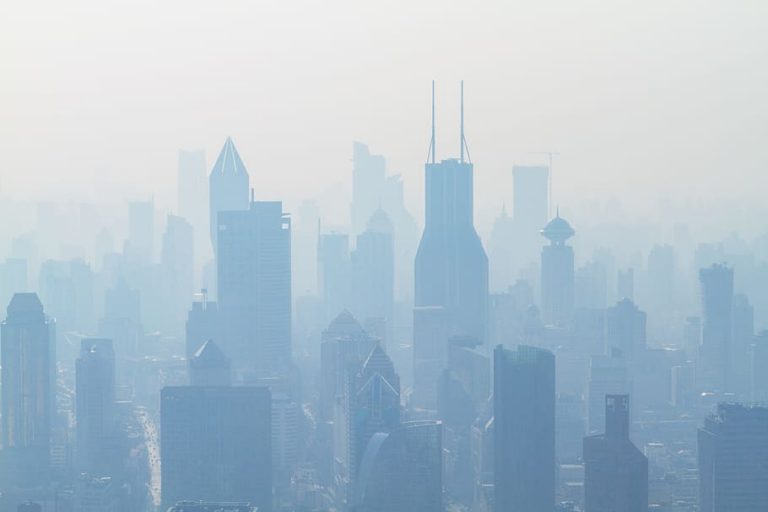Everyone’s problem
By Georgina Woods, Head of Impact, The Climate Risk Group.
Tuesday, 08 June 2023
Everything about climate change is unequal. Like wealth, responsibility for atmospheric accumulations of greenhouse gases is concentrated in G20 countries, in the world’s top 10% richest people, and in the one hundred most polluting companies. The impacts of climate change are similarly uneven. Loss and damage accrues to those with higher vulnerability and greater exposure, those who live precariously already, those who live intimately with the world around them, and rely on it for their livelihoods.

“We’re steadily marching toward an uninsurable future, not just in California but throughout the United States,” former California insurance commissioner, to Vox, June 2023.
What would happen if the global risk transfer industry bubble burst? Insurance is “the oil that keeps the wheels of the global economic machine moving,” underwriting the private capital and investment returns that are the engine of capitalism. The escalating consequences of climate change are making risk much harder to calculate and hitting the profits of the insurance and reinsurance industries. Global insurance giant AON told a US Senate Budget Committee inquiry last month that in response to unprecedented catastrophe losses, “Reinsurers are raising prices, limiting coverage, and even exiting some markets to improve returns.” If profit cannot be made by offering insurance, it won’t be offered at all.
In late May, the largest provider of home insurance in the US, State Farm, announced it would not be offering new policies in California, due, in part, to “rapidly growing catastrophe exposure.” The move is part of a wave of insurance companies withdrawing from high risk states and suburbs in the US.In Florida, 15 companies have decided to stop writing new business in the last eighteen months, according to the Insurance Information Institute. Six insurance companies were placed in receivership in Florida in 2022. It’s not just happening in Florida and California. According to a recent story by NPR, North Carolina, Louisiana, Colorado and Oregon too “have all seen insurers fold, cancel policies or leave the state after repeated floods, hurricanes and wildfires.” American International Group is curbing offers in 200 zipcodes, including in places like New York, Delaware, Montana and Idaho.
As the Washington Post pointed out, State Farm also happens to have the highest level of ongoing investment in the fossil fuel industry of any US insurance company. This means the company is financing climate change, while also withdrawing its service from some of the worst affected areas. Members of the US Senate Budget Committee have now written to a number of large insurance companies, including State Farm, asking them to account for their continued financing of fossil fuels, given the evidence provided to the committee’s inquiry about the “multiple serious dangers to overall economic stability and to insurance services in particular,” posed by climate change.
Commitments from the insurance industry globally to participate in global efforts to achieve the Paris climate agreement goals appear to be unravelling. The Net Zero Insurance Alliance is disintegrating, as huge global insurance companies withdraw, including Lloyds, Allianz and QBE, prompted by threats of legal action in the US by politicians and campaigners determined to expose and halt the conspiracy to save the world. Lloyds Chief Executive John Neal also told Reuters if the NZIA didn’t want more insurers to depart, it should stop requiring them to act quickly on their net zero commitments, which would make the Alliance fairly ineffectual in any case.
As the Association of British Insurers’ Director of Policy, Long Term Savings and Protection told an S&P event two years ago, “Unless we actually get that sort of adaptation, and really take ESG seriously and take climate change seriously, then we really haven’t got much of a future as a business.”
Insurance is not only being withdrawn from high risk areas in the US. A similar pattern is occurring in Australia, New Zealand and in England, where homes are still being built in flood prone areas. For older homes in England, a government and industry scheme called Flood Re subsidises home insurance in flood prone areas, making insurance accessible and affordable for households that would otherwise struggle to find and pay for cover. A paper by the Bank of England found plausible evidence this effect was disproportionately benefiting wealthier households.
MunichRe’s review of disaster costs in 2022 underscores the “protection gap” – the difference between insured and uninsured losses. In 2022, overall losses were close to average, but insured losses significantly higher than average, exacerbating the strain on the insurance industry. A quarter of overall losses were in Asia, where the protection gap is significantly wider than average. AON has put it at 86 percent. Swiss Re puts the protection gap for China at 95%. Underinsurance in Asia has huge implications for the region’s development and the welfare of its people, given the role of insurance in cushioning the impact of disaster.
In the absence of insurance, it is the government that people and businesses turn to as “insurer of last resort,” but public money will only stretch so far to cover the mounting costs of natural disasters. Some insurance companies have already indicated the industry will need government help. The global insurance industry will transform in the coming years, just as fundamentally as energy systems, food systems, and the climate itself. The future may be uninsurable under the industry’s old, precedent-informed business model. Making insurance available, sustainable and equitable is crucial to financial stability.
MEDIA ENQUIRIES
Petrana Lorenz, Director of Communications: +61 405 158 636
media@xdi.systems
